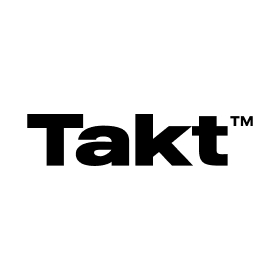
What’s the Difference: Micro Conversions vs. Macro Conversions?
Chances are, you won’t convert a website visitor on their first visit to your client’s website. That’s why what they do in-between matters.
Tracking your clients’ micro conversion metrics tells you where to optimize your pages and nudge website visitors to complete your desired goal. But what exactly are they, and how can you track them for all your clients in a scalable way?
This article will explore the difference between micro conversions vs. macro conversions, why micro conversions matter, and how to track them efficiently.
In this article:
- What Is a Micro Conversion?
- What SaaS Tools Are Good for Tracking Micro Conversions?
- What Is a Macro Conversion?
- What Is a Macro Conversion in Google Analytics?
- Micro and Macro Conversions Examples
- Summary: Micro Conversions vs. Macro Conversions
What Is a Micro Conversion?
A micro conversion is a critical step between when a potential customer first visits a website and when they complete the final goal. Micro conversions are the incremental steps or sets of secondary actions that indicate a visitor is on the path to converting.
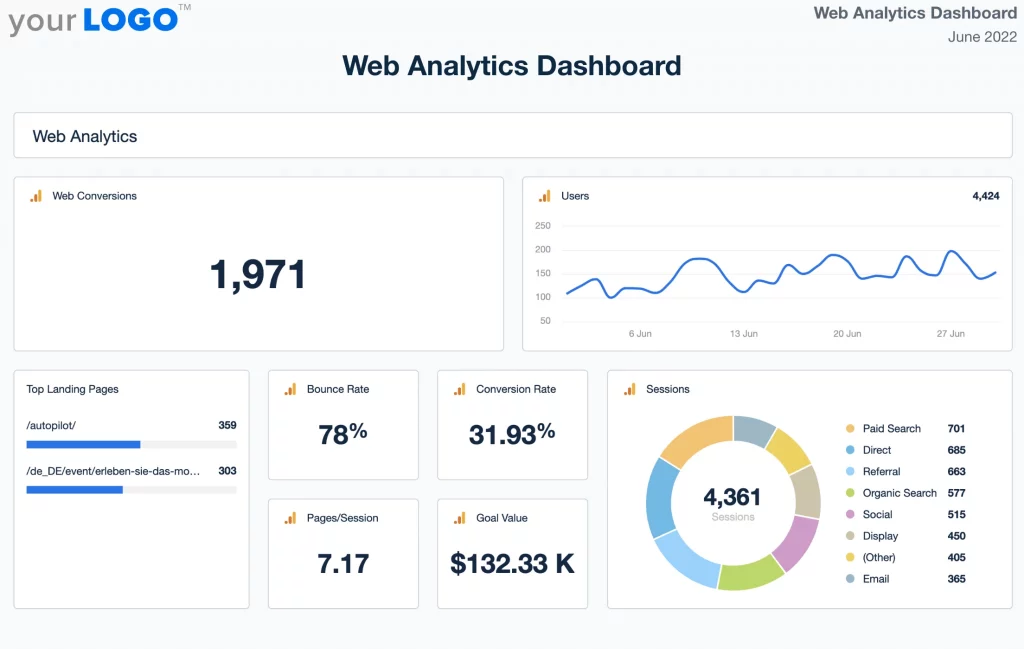
For instance, a micro conversion might be any one of the steps that lead up to purchase (or a conversion), such as:
- Adding a product to a shopping cart,
- Selecting shipping options, and
- Filling out payment information.
3 Types of Micro Conversions
There are three types of micro conversions: Navigation, Engagement, and Interaction. Differentiating between these types helps you know what to do next.
1. Navigational Micro Conversions
The following navigational data tells you where the website visitors are going: are they browsing products or services, reading reviews, or filling out contact details?
If visitors aren’t spending enough time here before abandoning a page, you might need to optimize it with better images and copy. You might also want to direct your visitors to such high-intent pages before making a bid to convert directly.
When visitors enter the checkout process, for instance, you’ll need to remove any roadblocks that might prevent them from completing it. Is the website too slow? Are there too many steps? Could you benefit from a last review or testimonial to seal the deal? These are all things that can help push that micro conversion toward an actual purchase.
Identifying navigational micro conversions is key to fixing any holes in your sales funnel and ultimately results in increased revenue.
Metrics To Track:
- Time spent on pages you identify as high-intent
- Time spent on key conversion pages like the checkout or demo request pages
- Number of visits to purchase supporting pages such as testimonials
- Number of times visitors go to a lead-gen form–this is for non-eCommerce websites
- Clickthrough rate from a SERP to see if an ad did its job
2. Engagement Micro Conversions
This type of metric tells you how long visitors are spending clicking around a website and whether they are return visitors. Engagement micro conversions indicate high intent.
Metrics To Track:
- Number of pages viewed above a target
- Time spent on a page above a target
- Frequency of visits above a target and/or recency of visits
3. Interaction Micro Conversions
This type of micro conversion indicates what a website visitor does while on a webpage. For instance, they might be adding a product to the cart, downloading a resource, watching a promo video, or initiating a live chat for assistance.
Metrics To Track:
- Time on page
- Click-through rate (CTR)
- Bounce rate
- Pageviews on product pages and funnel pages such as form and contact information pages
Tracking micro conversions allow marketing agencies to channel new prospects towards completing the desired action using email marketing, retargeting campaigns, and on-site conversion optimization.
What SaaS Tools Are Good for Tracking Micro Conversions?
Tracking micro conversions is a key part of a business’ funnel and helps marketing agencies optimize the buyer’s journey, personalize each client’s marketing strategy, and avoid missing out on potential customers. But doing all of this at scale is a challenge. That’s where you’ll need the right tool in your agency’s tech stack.
With all these micro conversion metrics to track and more, you’ll need to visualize the ones that matter most and put in some targeted conversion optimization efforts to improve your customer journey. To create a seamless funnel, you’ll need to analyze customer behavior for actionable insights–and this might not be so obvious from your Google Analytics account.
That’s where web analytics dashboards come in. They not only track your goal conversions data, but you can add in your own metrics and on-page data to track top landing pages and their performance.
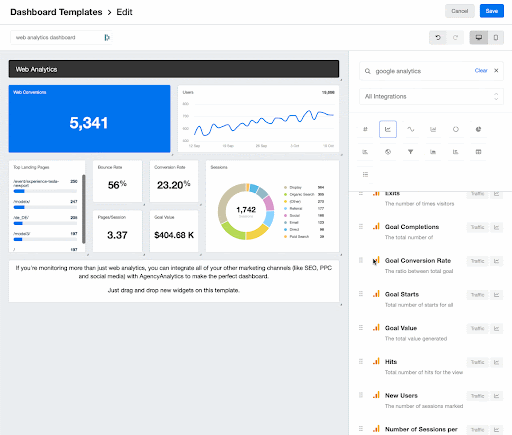
SaaS tools such as the one above allow you to showcase your key metrics and visually integrate goal-tracking. Create custom metrics that are unique to each of your clients to show how your website activities are contributing to your client’s business objectives.
Each micro conversion that you identify as being a leading indicator of campaign success can be set as a Conversion Goal in Google Analytics and then converted to a dynamic goal where you can track the pace on a daily or monthly basis. That way, you can easily see what is on track to hit goals versus those that may need additional attention.
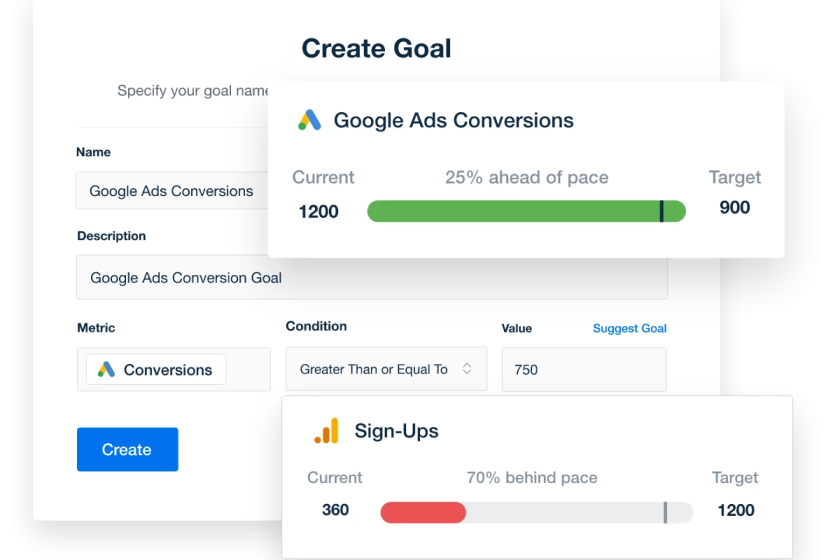
And with AgencyAnalytics, you have all your clients’ real-time data at your fingertips to create automated marketing reports that are ready in minutes. With everything you need under one roof, you spend less time logging in and out of multiple client accounts and more time executing your marketing strategy.
What Is a Macro Conversion?
Also known as macro goals, macro conversions are the actions your clients ultimately want their website visitors to take, like:
- Making a purchase
- Proving contact information by filling out a lead gen form
- Requesting a quote
- Making a phone call to their business
Just as with any conversion, macro conversions depend on your client’s business goals and the focus of your agency’s marketing efforts. For an eCommerce store, a purchase would be the ultimate goal–whereas a form completion would be the ultimate goal for a lead gen website or blog (and might become a micro-conversion for an eCommerce website if the goal is to drive low-touch sales).
What Is a Macro Conversion in Google Analytics?
In Google Analytics, a macro conversion is a completed activity that is crucial to the success of a business–aka, your client. This can include a purchase that has been made or a sign-up for an email newsletter.
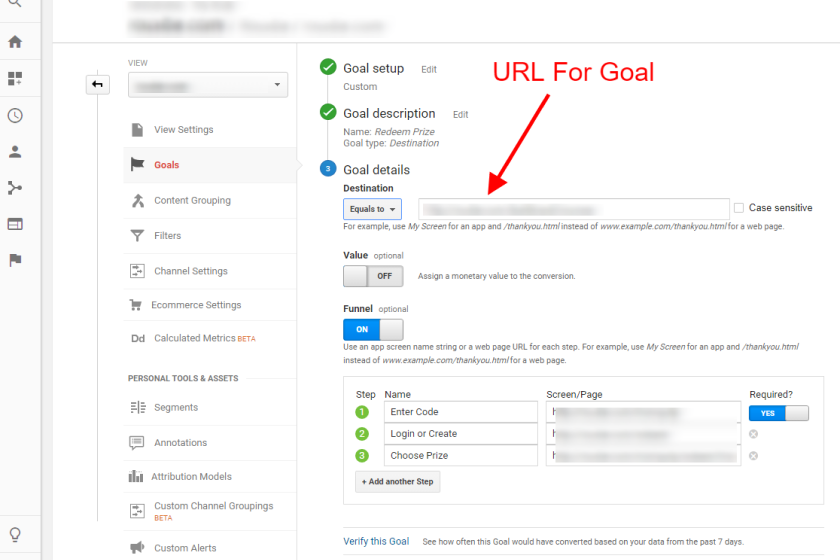
Setting up goals in Google Analytics allows you to track each of your customer journey milestones–aka micro conversions–leading up to the conversions themselves. Drag and drop these goals as widgets into your custom marketing dashboard, and you’re setting yourself up for success.
Micro and Macro Conversion Examples
Macro conversions are the primary goals of your client’s website. Meanwhile, micro conversions are the milestones leading up to that final goal. Here are some examples of each.
| Micro Conversion Examples | Macro Conversion Examples |
| Viewing a product page | Completing an e-Commerce order |
| Marking a product as ‘Favorite’ | Completing an application form |
| Putting a product in a shopping basket | Signing up as a member |
| Browsing a product page | Making a purchase |
| Watching a promo video | Signing up for a paid subscription |
| Email newsletter signup | Downloading a lead gen form |
| Downloading a PDF brochure | Requesting a quote |
| Reaching an application form page | Calling a business |
Summary: Micro Conversions vs. Macro Conversions
Every client has their own goals and objectives for their business. What’s a micro conversion for one could be a macro conversion for another. Knowing and defining your conversion metrics will help you get actionable insights from your data.
Tracking micro conversions allows marketing agencies to tap into the buyer’s journey and make incremental changes to streamline pipelines and ultimately hit their ultimate goal: the macro conversion.





